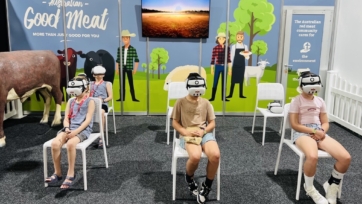What makes up a memorable STEM program? Five tips beyond the buzz.
What makes up a memorable STEM program? Five tips beyond the buzz.
With extraordinary growth predicted in the future of the STEM sector, having skills in Science, Technology, Engineering and Mathematics is pivotal to workplace success in the future. For those who work within the education sector, this means that preparing all students with the skills they need to succeed in the STEM sector is vital. However, educators can’t do it alone. Read below for 5 top tips on how your business can create a successful schools STEM program that stands out from the rest.
1. Use a multi-faceted approach
 Research has long since shown that all students learn in different ways. Therefore employing a multi-faceted approach to your STEM program is vital. This means creating a varied collection of resources and learning opportunities, instead of just one. For example, Google’s Made with Code program features free, do-it-yourself online coding projects, in-class lesson plans, online forums and do-it-yourself Made with Code parties. By providing a range of resources, you can extend your reach and build upon the impact of the program.
Research has long since shown that all students learn in different ways. Therefore employing a multi-faceted approach to your STEM program is vital. This means creating a varied collection of resources and learning opportunities, instead of just one. For example, Google’s Made with Code program features free, do-it-yourself online coding projects, in-class lesson plans, online forums and do-it-yourself Made with Code parties. By providing a range of resources, you can extend your reach and build upon the impact of the program.
2. Provide innovative, curriculum-linked resources
 Teachers are constantly on the lookout for engaging new STEM teaching and learning resources, which are closely aligned to the Australian Curriculum. How can you ensure your STEM program stands out? The best way to achieve this outcome is by linking your resources directly to the Australian Curriculum and featuring learning activities that reflect what is seen as best practice within the sector, this makes your resources easy and exciting to use for teachers nationally! Another way your learning resources can stand out is through careful design and presentation. For example, you could check out Australia Post’s learning resources for this year’s Stamp Collecting Month as a guide.
Teachers are constantly on the lookout for engaging new STEM teaching and learning resources, which are closely aligned to the Australian Curriculum. How can you ensure your STEM program stands out? The best way to achieve this outcome is by linking your resources directly to the Australian Curriculum and featuring learning activities that reflect what is seen as best practice within the sector, this makes your resources easy and exciting to use for teachers nationally! Another way your learning resources can stand out is through careful design and presentation. For example, you could check out Australia Post’s learning resources for this year’s Stamp Collecting Month as a guide.
3. Add an element of competition
 Children love a challenge, and many students thrive when presented with an element of competition. By challenging students to find a solution to a real-world problem, or to invent something new, you are encouraging both STEM and problem solving skills. One fantastic example of this is Tata Consultancy Services’ GoIT Challenge. In this competition, Year 8 students must work in small groups and use Design Thinking to solve a community issue using technology. They then present their ideas to a panel of expert judges at an exciting finals event.
Children love a challenge, and many students thrive when presented with an element of competition. By challenging students to find a solution to a real-world problem, or to invent something new, you are encouraging both STEM and problem solving skills. One fantastic example of this is Tata Consultancy Services’ GoIT Challenge. In this competition, Year 8 students must work in small groups and use Design Thinking to solve a community issue using technology. They then present their ideas to a panel of expert judges at an exciting finals event.
4. Know your target audience
 Ensuring you are fully aware of the characteristics of your target audience is vital for many reasons. Firstly, by keeping the age bracket in mind you can correctly link curriculum learning outcomes and design appropriate teaching and learning experiences. Secondly, an understanding of your target audience also plays a significant part in developing engaging design for your resources.
Ensuring you are fully aware of the characteristics of your target audience is vital for many reasons. Firstly, by keeping the age bracket in mind you can correctly link curriculum learning outcomes and design appropriate teaching and learning experiences. Secondly, an understanding of your target audience also plays a significant part in developing engaging design for your resources.
5. Identify and appoint some inspirational ambassadors
 Children often report that they would be more likely to engage in STEM subjects if they were exposed to relevant and inspiring role models. A wonderful example of this is Origin’s LittleBIGidea program. Each year, the competition has an ambassador that takes on the role of mentoring and motivating the participants. By including inspirational ambassadors, Origin make their program appealing to schools and students year after year.
Children often report that they would be more likely to engage in STEM subjects if they were exposed to relevant and inspiring role models. A wonderful example of this is Origin’s LittleBIGidea program. Each year, the competition has an ambassador that takes on the role of mentoring and motivating the participants. By including inspirational ambassadors, Origin make their program appealing to schools and students year after year.
So where to next?
Now it’s time to get started on creating your STEM program! If you would like assistance in taking your STEM message directly to Australian classrooms, please get in contact with us at hello@kimberlineducation.com.au, or call us on 02 9693 1975.
References




